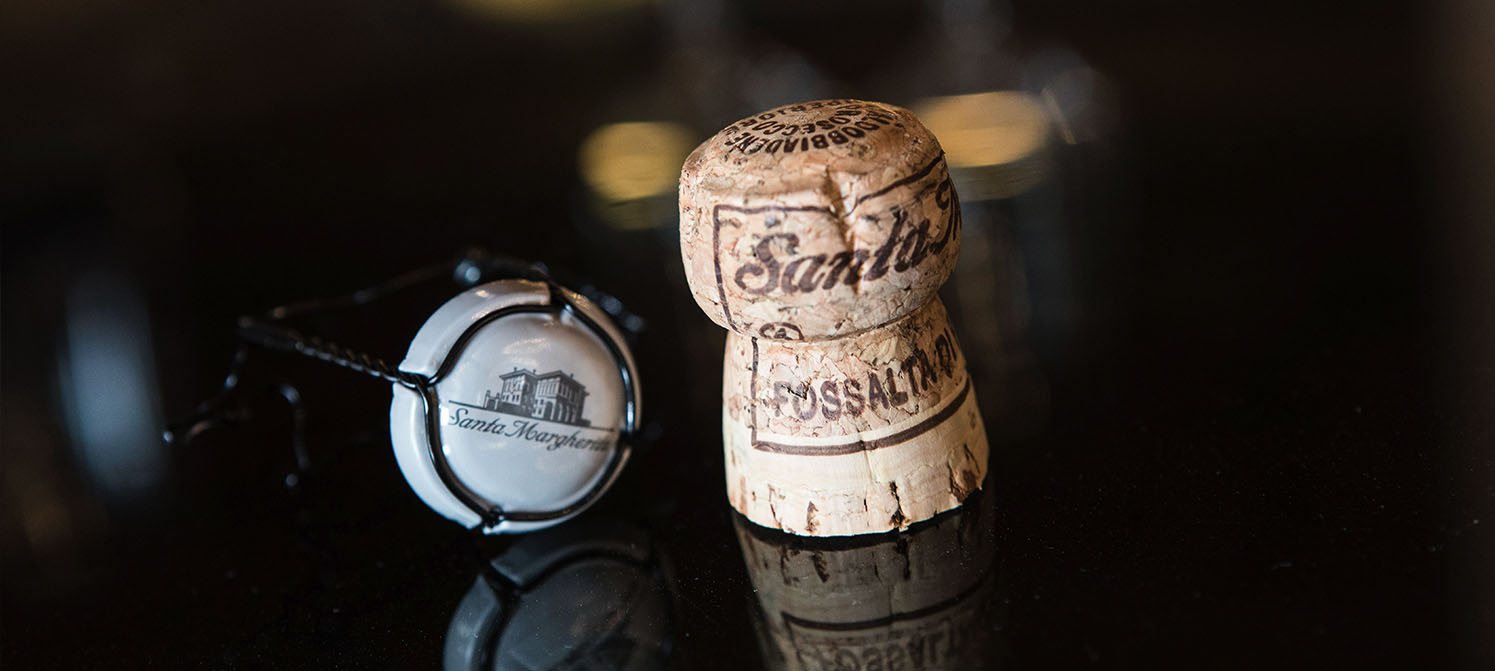
Have a Question?
Get your answer
Is Pinot Grigio meant to be aged?
Pinot Grigio is meant to be enjoyed fresh, while the wine is still young. Our most current vintage is within the past two years. The vintage date on the bottle indicates the year in which the grapes were harvested and made into wine. Our Pinot Grigio is aged in stainless steel to preserve its delicate flavors and aromas and should be enjoyed young to capture these complex characteristics. Other kinds of white wines, like Chardonnay, are typically aged in oak and without the fresh, elegant flavors of Pinot Grigio, the oak flavors of Chardonnay can be enjoyed for a longer drinking window. We recommend savoring our Pinot Grigio within one or two years of the vintage date. While the wine will continue to be drinkable beyond this window, it might be less aromatic and in a style not intended by our winemaker.
What makes wines vegan? Are your wines vegan?
It seems obvious that wine would naturally be vegan, but there can be some processing aids used to finish and stabilize a wine that can come from animal sources. Fining agents, such as egg whites, casein (from milk), and even gelatin can be added towards the end of the wine's aging process to help improve a wine's clarity and stability. Fining agents are not intended to remain in the final product, but there's no guarantee. One of our key values is respect for humanity and all the Earth's creatures. We are continually reinvestigating new resources and technologies that help to deliver the highest quality, vegan and eco-friendly products. To be more conscious and aware of sustainable and responsible practices, we abandoned the use of animal byproducts years ago; instead we use only vegan-friendly bentonite clay, yeast‐derived and vegetable-derived products during filtration. Respect. That's why we have the highest quality, vegan and sustainable products.
Is there a difference between the Alto Adige and Valdadige Pinot Grigio?
The Adige River Valley runs through two autonomous regions: the Italian‐speaking Trentino in the south and the German‐speaking Alto Adige (also called Südtirol) in the north. Valdadige DOC encapsulates both provinces while Alto Adige DOC is limited to the north. Importantly, the terroir of the Adige River Valley does not suddenly stop when it passes the political border from Alto Adige to Trentino. Santa Margherita sources Pinot Grigio from several vineyards stretching about 19 miles across the political border of Alto Adige and Trentino, in an area a little smaller than the size of Napa Valley AVA. While the Valdadige DOC extends all the way to Verona, Santa Margherita sources its Pinot Grigio exclusively from the upper half of the appellation, with nothing south of the city of Trento (where the warming influence of Lake Garda starts to change the terroir).
What pairs well with Santa Margherita Pinot Grigio with?
This wine is dry, with intense aromas and appealing hints of Golden Delicious apples and citrus, with a long, multi‐layered finish. Excellent as an aperitif, its medium body makes it versatile to pair with everything from salads to chicken or grilled fish. Wonderful pairing ideas include butter lettuce with apples, walnuts and pomegranate seeds, pizza topped with prosciutto and arugula, scallops with tarragon cream, or tagliatelle with Italian olive oil, lemon zest and pine nuts.
What pairs well with Santa Margherita Chianti Classico Riserva?
Dry, rich and rewarding, this wine has complex aromas of red cherries and plums with a palate that unfolds to berry fruits and licorice framed by light, toasty notes of oak, and finishes with a firm structure. This hedonistic wine is perfect with robust dishes like barbeque and grilled meats. Try it with grilled chicken with herbs and cracked green olives, spicy jerk vegetables or a Tuscan dish like grilled steak Panzanella.
What pairs well with Santa Margherita Prosecco Superiore?
This wine is dry with fine, lively bubbles, delicate pear and apple fruit aromas and a crisp finish. Whether served at the beginning of a beautiful evening for two or sipped throughout a lively meal with friends, this celebrated bubbly is quite versatile at the table and can be shared time and time again. The elegant mousse can refresh your palate for the next bite, and the greater complexity and intensity of our Prosecco Superiore DOCG will not get overwhelmed, even by heavier dishes like pasta carbonara with shrimp, grilled vegetables drizzled with Italian olive oil and parmesan cheese, or simply prepared filet of beef with rosemary.
What pairs well with Santa Margherita Sparkling Rosé?
Elegant perfumes of strawberries and citrus lead to an attractive palate with mixed berry fruits that linger on the finish. This wine is wonderful on its own and pairs well with savory appetizers, complex seafood dishes and anything spicy. The elegant mousse will refresh your palate for the next bite, and contrasting the bubbles with something soft or creamy can elevate your next meal. Open a bottle along with goat cheese souffle, scallops with roasted garlic and pesto, or a slow-cooked spicy red chicken curry.
Are your wines gluten-free?
All of our wines are gluten‐free.
I am hosting a party? How much wine do I need?
We are happy to know you have picked Santa Margherita to host a party. Have you visited our entertainment page yet? (LINK ENTERTAINMENT PAGE) There you will find hosting tips, pairing suggestions and — most importantly — our host calculator! This will help you determine how much wine you need based on the number of guests and duration of your event.
Why does Santa Margherita Prosecco have DOCG on the label, when other Proseccos carry the DOC designation?
Prosecco DOC is one of Italy’s largest denominations (or defined region of production) and comes from a wide area that includes central and northeastern Veneto plus all of Friuli‐Venezia Giulia. Because it is one of Italy’s largest denominations geographically, soil types, aspect and the local mesoclimate can vary widely. That said, Prosecco DOC wines in general are fresh, fruity and easy‐to‐drink. On the other hand, Prosecco Superiore DOCG comes from a much smaller area of production; in fact, only 17% of all Prosecco can carry this higher DOCG status on the label. Coming from a smaller area, Prosecco Superiore DOCG wines are more concentrated and complex. Located between the tongue‐twisting towns of Conegliano and Valdobbiadene, this DOCG is Prosecco’s historical heartland and the most respected area in the Prosecco region. The local climate is mild, influenced by both the warmer air coming up from the Adriatic Sea and the cooler air coming down from the Dolomites. This pre‐Alps area is defined by its hills, with soils of sandstone and clay around Valdobbiadene, turning to clay, limestone and an alluvial mix near Conegliano. This local terroir, plus stricter requirements that include lower yields in the vineyards and lighter pressings at the winery, means that these DOCG wines have more multi‐layered aromas, with intense concentration of flavors.
What makes Rive di Refrontolo so special?
Within Prosecco Superiore DOCG is a collection of crus called ‘Rive’ which represent a very rare, higher quality subcategory in the smaller Prosecco DOCG region. A study of soils and topography by the Conegliano School of Enology declared these vineyard areas the very best sites to produce Prosecco. In the local dialect, Rive means a very favorable site on a steep slope. As such, the wines can only be made within a single village, must be vintage‐dated, must be hand‐harvested and have a lower vineyard yield and press yield than even Prosecco Superiore DOCG. The wines will then be labeled as Rive followed by the name of the village (there are currently 43 Rive microzones).

